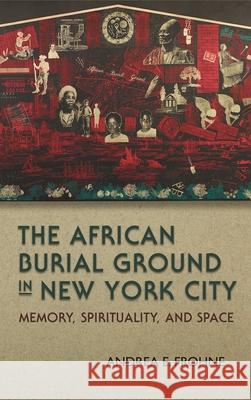The African Burial Ground in New York City: Memory, Spirituality, and Space » książka
The African Burial Ground in New York City: Memory, Spirituality, and Space
ISBN-13: 9780815634300 / Angielski / Miękka / 2015 / 468 str.
The African Burial Ground in New York City: Memory, Spirituality, and Space
ISBN-13: 9780815634300 / Angielski / Miękka / 2015 / 468 str.
(netto: 261,82 VAT: 5%)
Najniższa cena z 30 dni: 257,06 zł
ok. 13-18 dni roboczych
Dostawa przed świętami

Darmowa dostawa!
In 1991, archaeologists in lower Manhattan unearthed a stunning discovery.
Buried for more than 200 years was a communal cemetery containing the remains
of up to 20,000 people.
At roughly 6.6 acres, the African Burial Ground is the largest and earliest
known burial space of African descendants in North America. In the years that
followed its discovery, citizens and activists fought tirelessly to demand respectful
treatment of eighteenth-century funerary remains and sacred ancestors. After
more than a decade of political battle on local and national levels and scientific
research at Howard University, the remains were eventually reburied on the site
in 2003.
Capturing the varied perspectives and the emotional tenor of the time, Frohne
narrates the story of the African Burial Ground and the controversies surrounding
urban commemoration. She analyzes both its colonial and contemporary representations,
drawing on colonial-era maps, prints, and land surveys to illuminate
the forgotten and hidden visual histories of a mostly enslaved population buried
in the African Burial Ground. Today, personal offerings and commemorative artworks,
many of which incorporate traditional African and diasporic arts and
religions, pay tribute to the ancestors and the sacred space. Tracing the history
and identity of the area from a forgotten site to a contested and negotiated space,
Frohne situates the burial ground within the context of late twentieth- and early
twenty-first-century race relations in New York City to reveal its enduring presence
as a spiritual place. Finally, she illustrates visually, spiritually, and spatially
the historic and contemporary formation of a New York City African diaspora in
relation to the African Burial Ground."











